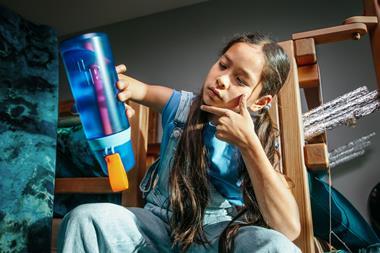
It is a truth universally acknowledged by fmcg brands that they cannot succeed and grow if they don’t connect meaningfully with consumers.
Marketers strategise endlessly over who their target consumers are, what they do and how and when is best to reach them. Most think they are doing a good job of avoiding gender stereotypes in their advertising, but Kantar’s latest analysis of advertising creativity and media effectiveness, AdReaction: Getting Gender Right, shows consumers clearly disagree.
Women in particular think they are portrayed in outdated ways. Only 63% of consumers think females are treated respectfully in advertising and just 40% think they are portrayed in a way that ‘makes me think highly of them’.
There is also evidence that fmcg marketers are still targeting stereotypes. Ads for household cleaners, baby products and laundry products, for example, are nearly completely (98%) skewed towards female shoppers, while ads for drinks brands are more balanced at 48%. Society has evolved, but the industry is lagging in its response and has not kept pace with the bigger expectations that consumers, particularly younger centennials and millennials, have of brands today.
With more awareness and attention from consumers about the way brands represent gender in their advertising, as well as new rules from the Committee of Advertising Practice banning the presentation of gender stereotypes that are likely to cause harm or serious widespread offence, it is timely that the focus for this year’s International Women’s Day is gender balance. But achieving the right balance can be a minefield for marketers.
Achieving gender balance in advertising is not just about putting more women on screen.
While sexist stereotypes should be challenged, not every brand needs to do this in a provocative way. Bold advertising statements such as Gillette’s ‘The Best men can be’ campaign might work for some brands, but they will not work for all.
While advertising campaigns clearly need to portray a more balanced view of society to keep customers loyal to brands, they also need to remember that the brand or product message is an essential component of effective advertising. Ariel’s 2018 UK campaign, ‘Do you pod?’, for example, focused on the convenience of liquitabs over more traditional liquid washing detergents, but the story was told using a broad range of characters doing this everyday task. It successfully avoided the gender stereotypes we so easily associate with this category.
My point is, gender balance should become the norm and not a statement.
The issue of gender balance is not just a moral one, but a commercial one too. Progressive ads are 25% more likely to be effective. And effective advertising means consumers buy more and for longer, helping brands remain relevant and command a price premium in a constantly changing retail world.


















No comments yet